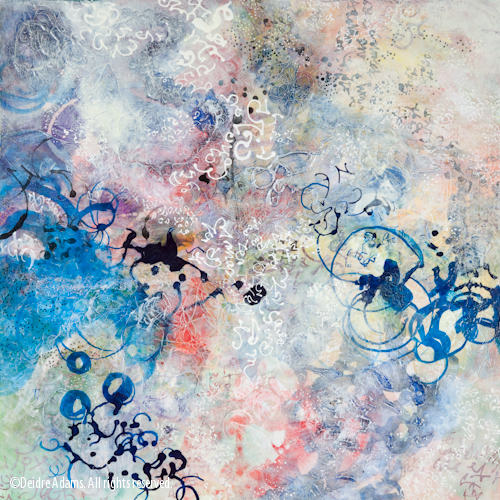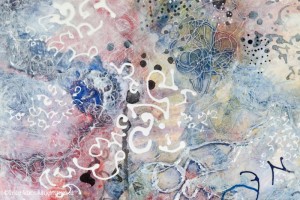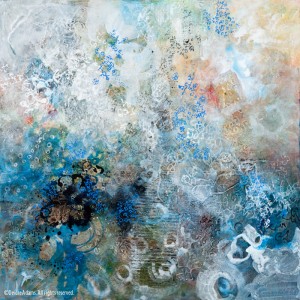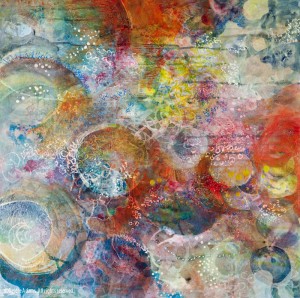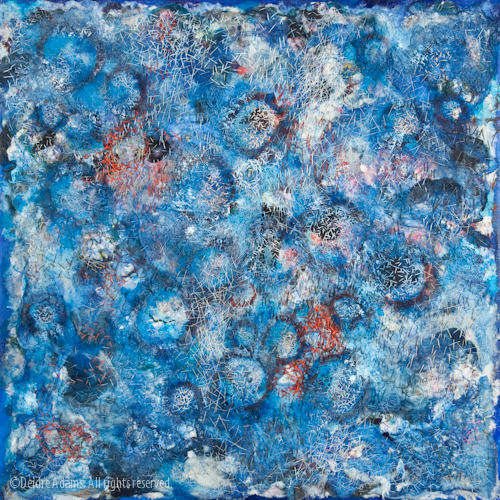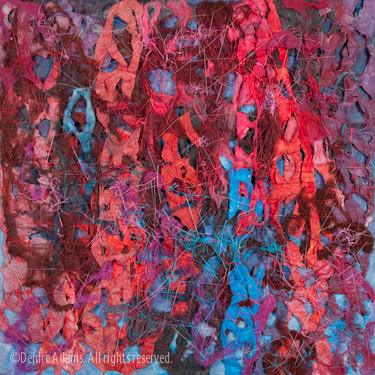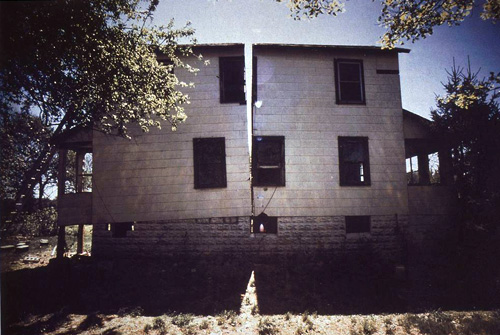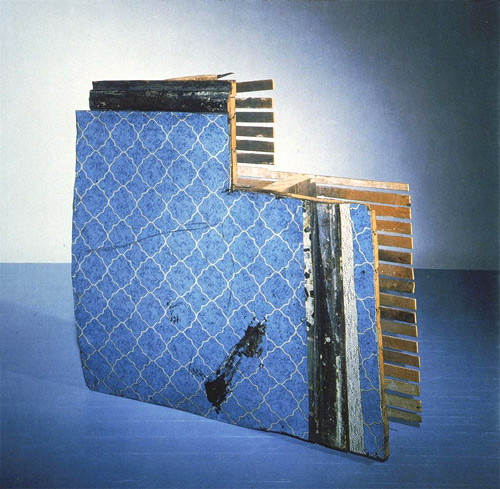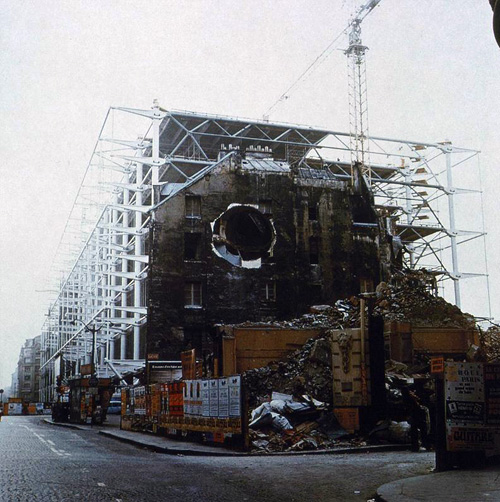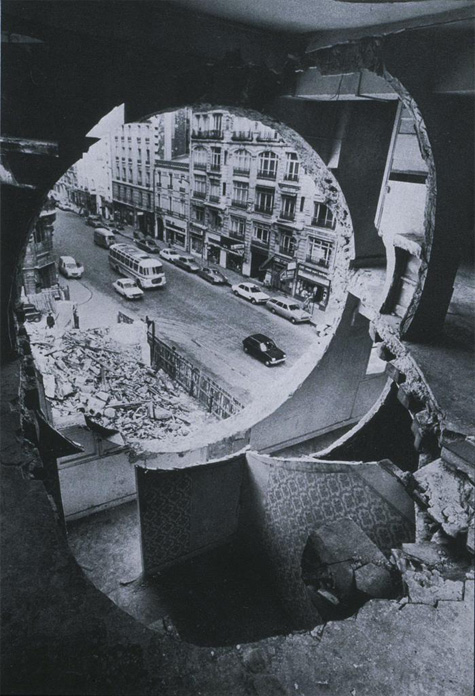A State of Resonance
Resonant State No. 1, 24 x 24 inches, ©Deidre Adams
Do you ever get the feeling that life isn’t always as random as we might think? I had yet another experience today that goes into the category of amazing coincidence.
Last week, I wrote about my Entangled Series, the first group of pieces that I did for my Painting V class. Making these pieces was a cathartic experience for me, but they were also extremely time-consuming. While it was OK that I had to spend pretty much every minute of my time not taken up with other obligations working on them, I knew that work in my other classes was going to start demanding way more time and attention, and I needed to find a way to do the work faster. So I decided to go back to painting.
By now I think I’ve worked something out of my system, so even though I started out this second series still thinking about entanglement, the work evolved into something different as I progressed. I’m still thinking about the processes of the brain, but now it’s more general. I’ve been doing a lot of research on neuroscience, at least insofar as I can understand it because it can very quickly become “science-y” beyond the point that I’m willing to pursue it. I have a basic understanding of neurons, synapses, axons, and dendrites, but what I find immensely fascinating is that science still doesn’t have a clear understanding of how all these physical structures lead to the phenomena of language and memory, perceptions and emotions, consciousness and dreams, and ultimately becomes an awareness of self. This is what I’m trying to explore in these paintings.
I’m still working with texture, because after so many years of working with textiles, I’ve developed an inseparable connection with the tactile nature of materials. Besides the visual texture imparted by the lines, shapes, colors and markings in this work, I’m also using thread, string, fragments of handmade paper, and other embedded objects to impart elements of physical texture to the surface. I’m still very interested in creating a sense of depth and layering here, in an attempt to create an illusion that you are moving into the piece.
Resonant State No. 1, detail, ©Deidre Adams
Today, I was in the process of writing this blog entry on the next group of pieces, when something arrived in the mail which helped to solidify my ideas about what I’m trying to say with these pieces: the December ’09 issue of Discover Magazine. Now as far as I know, we do not have a subscription to this magazine (although it could very well turn out that a family member is giving us a gift subscription for Christmas), and I’ve never read it before in my life. But it looked interesting, so I thumbed through it, and right there on page 61 is a fantastic article about Henry Markram and the Blue Brain project. The project is an attempt to simulate a human brain with computers, reverse engineering what we know and “building tools to synthesize those data into biological phenomena.” In its current state, the project is running on the IBM Blue Gene®/P, a supercomputer consisting of “16,000 processors squeezed into a space the size of four refrigerators.”
The article is fascinating and I highly recommend it. I won’t go into it in too much depth, except for the part that really sparked my recognition of how this applies to my work. In answer to a question about what they’ve learned so far with the project, Markham talks about the phenomenon of “gamma oscillations,” a rhythm of electrical activity that appeared spontaneously in the circuit. He explains further:
Gamma oscillations are the basis for consciousness, according to a theory. The theory holds that when the brain goes into high-frequency oscillations, those oscillations do perceptual binding, which is the foundation of consciousness. … It’s significant that we didn’t specifically try to model the phenomenon in the brain. All we have to do is pay attention to the fact that we are building it correctly, and these phenomena emerge. The whole circuit goes into this resonant state, which is an amazing state. Now we can dissect the circuit and find out exactly which neurons were crucial, which pathways, which receptors, and so forth.
I love the idea of the “resonant state,” as I think this has multiple meanings applicable to thoughts, memory and the making of art in and of itself. Here are the other paintings in the series:

